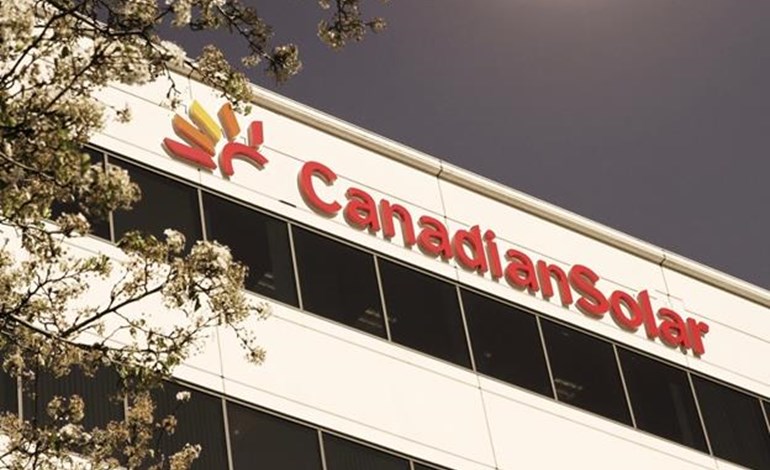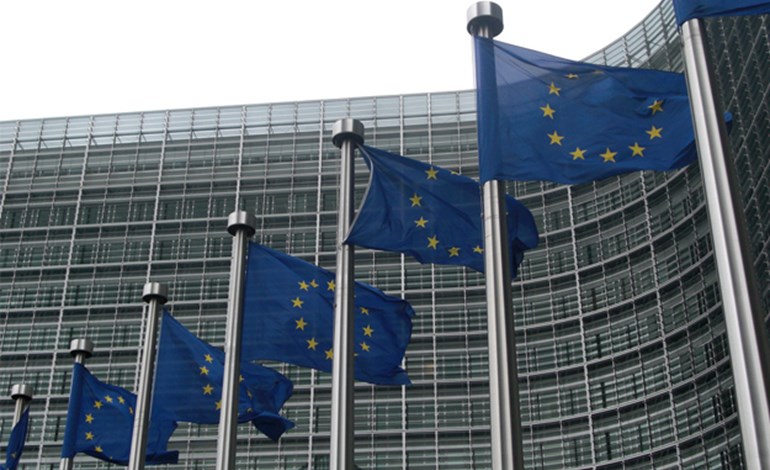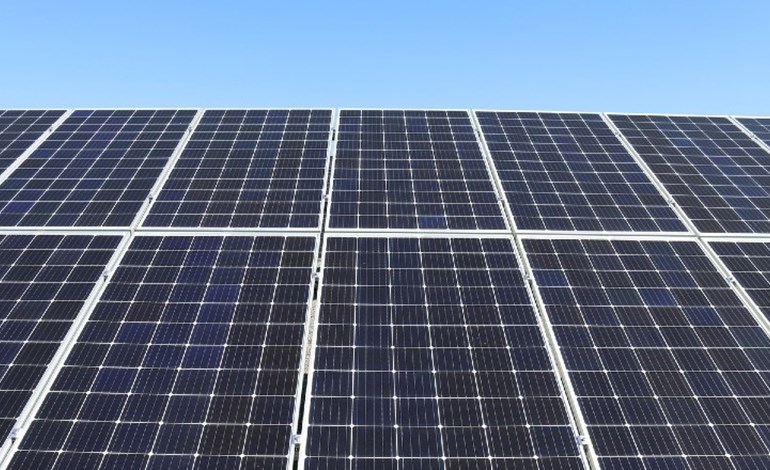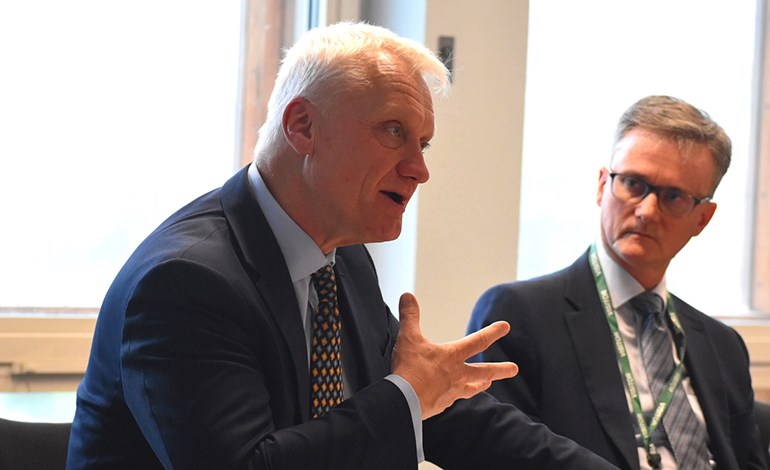Canadian Solar’s majority-owned subsidiary CSI Solar Co has completed its initial public offering (IPO) process and its shares have started trading on the Shanghai Stock Exchange’s Sci-Tech Innovation Board under the stock code 688472. In the flotation, CSI Solar issued 541,058,824 shares, representing 15% of 3,607,058,824 shares outstanding immediately after the IPO. In addition, CSI Solar has granted the principal underwriter of the IPO a 30-day option to purchase up to an additional 81,158,500 shares of CSI Solar to cover over-allotments, if any. The total shares issued by CSI Solar will be 622,217,324, representing approximately 17% of 3,688,217,324 shares outstanding after the IPO, assuming that the over-allotment option is exercised in full. The shares were issued at a public offering price of RMB11.10 per share and the total gross proceeds of the IPO are approximately RMB6bnn (approximately US$850m). Immediately after the IPO, Canadian Solar owns approximately 64% of CSI Solar, assuming the over-allotment option is not exercised, or approximately 62% of CSI Solar, assuming that the over-allotment option is exercised in full. The shares of CSI Solar will not be and have not been registered under the Securities Act of 1933 and may not be offered or sold in the United States absent registration or an applicable exemption from registration requirements, Canadian Solar said. Credits: renews.biz [Image: Canadian Solar]
EU Looks To End Windfall Levy On Renewables
The European Commission has recommended ending a revenue cap on renewable energy producers, many of which have claimed has acted as a barrier to new wind and solar investments. In a report on the review of emergency interventions to address high energy prices submitted to the Council on 5 June, the European Commission found that the temporary, emergency measures introduced for the energy market at the end of last year – electricity demand reduction measures, infra-marginal revenue cap, and retail price setting rules – contributed to a calming of the European energy markets. The report also concludes that as the EU electricity market supply and prices have now changed considerably from the record high levels last year, a prolongation of these emergency measures does not seem necessary or advisable at the current time. The Commission confirmed that it will not propose a prolongation of these crisis measures. At the same time, the report recalls that certain aspects of these rules have been included among the longer-term structural adjustments in the electricity market design proposals tabled by the Commission in March. The report notes that electricity prices have now decreased to less than €80/MWh and gas prices have not only fallen but also stabilised, to the extent that the electricity price spikes observed throughout 2022 are considered “less probable to occur in the upcoming winter”. With respect to the electricity demand reduction measures, each EU country implemented measures to reduce electricity demand, such as through awareness-raising campaigns and targeted energy-saving measures. The implementation of the inframarginal revenue cap varied greatly across EU countries – both in terms of the level of the cap and the time scope. The report notes that the increased stability in gas and electricity markets means prices have steadily fallen below the revenue cap level. The report also highlights that 12 out of 25 EU countries took advantage of the possibility to widen the scope of retail price regulation in times of crisis to SMEs and apply price regulation below costs under certain conditions. Credits: renews.biz [Image: Sebastian Bertrand]
Orsted Commits To Recycling Solar Panels
Orsted has pledged to reuse or recycle all photovoltaic modules from its global portfolio of solar farms with immediate effect. To assist this commitment Orsted has formed a partnership with Solarcycle, a technology-based PV recycling company, to process and recycle Orsted’s end-of-life solar panels from its projects across the US, which is one of the main solar markets for the developer. Solar energy is a key technology for the green energy transition and for limiting global warming. However, the deployment of this technology requires vast amounts of virgin materials. The mining of these has environmental and social impacts, and competition to secure access to these materials is on the rise. To lower dependency on virgin materials, a key solution is to reuse or recycle end-of-life solar panels and bring the materials back into manufacturing. Today, reusing and recycling solar panels is limited, and landfilling is still common practice. This means that materials with a high value to the green energy transition are simply let go to waste. Ingrid Reumert, Senior Vice President, and Head of Global Stakeholder Relations at Orsted, said: “With this global solar commitment, Orsted is leveraging its position as a leader in sustainability and renewable energy to incentivise the creation of a market for – the recycling of solar panels – and with the Solarcycle partnership, we’re taking the first tangible steps to ensure that critical materials needed for green energy will be reused or recycled.” Solarcycle’s recycling facility in Texas extracts the valuable materials from panels, including metals like silver, copper, and aluminium, and materials such as glass and silicon. The company can take these materials and refine them to make the next generation of newer, higher-efficiency solar panels. Orsted has been growing its onshore portfolio in the past few years with the ambition of reaching 17.5GW of wind and solar PV capacity for its global onshore portfolio by 2030. Credits: renews.biz [Image: Orsted]
Mytilineos Buys Five Alberta Solar Projects
Mytilineos Energy & Metals has made a 1.4GW portfolio purchase of five solar projects from Westbridge Renewable Energy Corp. The projects, currently under development in Alberta, Canada, include the 230MW Georgetown solar farm, the 280MW Sunnynook project, the 200MW Dolcy, 300MW Eastervale, and 225MW Red Willow project. Renewables Consulting Group (RCG) has acted as sole technical advisor, providing a full technical due diligence of the portfolio, a thorough review of engineering and preliminary design, interconnection and transmission system review, independent energy yield analysis, permitting, development, transaction/commercial market intelligence and stakeholder review. Mytilineos’ Regional Managing Director for North America Luis Laguna said: “We first set foot in Alberta five months ago and now we are celebrating this great accomplishment. Thanks to RCG for their guidance and advice in navigating our entry into the Canadian market.” RCG Principal Bert Chen added: “RCG is proud to introduce Mytilineos to the Alberta and Canadian market and assist in providing thorough due diligence of the portfolio. We believe that Mytilineos’ global expertise will bring the necessary expertise and resources to develop these projects as a new entrant in the Alberta market.” Credits: renews.biz [Image: Pixabay]
Banks Renewables Seeks To Add Battery To Leeds Solar Farm
Banks Renewables has submitted a proposal to add battery storage capacity to the Barnsdale Solar Energy Park to Leeds City Council for review. The developer previously secured planning approval for the project in 2021 and is now seeking permission to add a containerised battery energy storage system with the capacity to hold up to 40MW of the electricity generated at the site, which is enough to power around 48,000 homes for two hours during peak times. The original Barnsdale scheme was supported by both Allerton Bywater and Kippax Parish Councils, and after being recommended for approval by the City Council’s expert planning officers, won unanimous support from the members of its planning committee. Jamilah Hassan, community relations manager at the Banks Group, said: “We’ve been continuing with the technical work required to progress the Barnsdale solar energy park and the submission of this planning application marks the latest landmark on the journey towards the realisation of our plans. “Adding battery storage to this site will ensure the energy supply can be managed with maximum efficiency and will also reduce energy wastage, which will in turn assist in reducing the cost of energy for consumers. “The benefits of co-locating battery storage capacity alongside solar energy generation facilities in this way are proven and accepted, and having had a great deal of local support for the Barnsdale project, we hope Leeds City Council’s planning committee will be similarly supportive of this application.” Credits: renews.biz [Image: Banks Renewables]
Trina Solar Wins Uzbek Solar Tracker Deal
Trina Solar’s tracker business has signed an agreement to provide 510MW of solar trackers for projects in Uzbekistan. The contract with Dongfang Electric International Corporation (DEC International) will see TrinaTracker supply Vanguard 1P units to the Jizzakh and Samarkand solar power plants in Uzbekistan. Once connected to the grid, the two sites will generate 1.1 terawatt-hours (TWh) of renewable electricity annually. This is the second project TrinaTracker has secured as the exclusive supplier for solar plants in Uzbekistan, supporting the country’s solar power development target of 4GW by 2026 and 5GW by 2030. It has provided 2618 sets of solar trackers for the 100MW Nur Navoi Solar Project, the country’s first solar power plant, which was inaugurated in August 2021. The country aims to develop high-quality power plants in a bid to maximise the benefits of solar energy. Credits: renews.biz [Image: Trina]
UK Solar Taskforce Raises The Roof
Schools, warehouses and car parks could be at the forefront of a revolution in affordable solar power, under plans discussed at the first meeting of the UK government’s new Solar Taskforce. London has a clear target to increase solar capacity by nearly five-fold to 70GW by 2035 as part of wider plans to power Britain with cleaner, cheaper and more secure energy sources. Even when this is met, the UK would be using only a very small proportion of its land mass for solar panels. Already over a million UK homes have solar panels fitted to their roofs, providing reliable energy while significantly reducing consumer bills and creating thousands of jobs. However, the taskforce, led by Energy Minister Graham Stuart (above left) and Solar Energy UK chief executive Chris Hewett (above right) highlighted the untapped potential of commercial buildings, schools, warehouses and car parks. “Households across the UK are already doing their bit to provide cleaner, cheaper and more secure energy sources with the solar panels on their roofs – but with acres of rooftop space on car parks and supermarkets in every community, we can be doing even more,” said Stuart. “This new dedicated Solar Taskforce will have a laser-like focus on cutting the costs and breaking down the barriers to harnessing the power of the sun in every way we can, all while using a small fraction of this country’s land,” he added. “Doing so will make a significant contribution to boosting our energy security, cutting people’s bills and providing long-term jobs.” Hewett added: “Installing rooftop solar power, whether at residential or commercial scale, is one of the best investments available, offering dramatic savings on energy bills and the opportunity to be paid for sending excess power to the grid. The benefits can also be greatly enhanced by adding a battery storage system. “Solar is the most popular form of power generation amongst the British public and consumer demand has never been higher, though the rate of rooftop installation must double to help hit 70GW by 2035. The number of solar farms will also have to increase significantly. I am delighted we now have industry leaders working directly with the government to resolve the stumbling blocks and maximise the benefits that solar energy offers to the nation.” Part of the discussion at the first meeting of the taskforce was how to drive more rooftop installation, such as enabling cost reductions for households and businesses looking to install solar panels, so that even more can reap the benefits of solar power such as reducing their bills. The body also discussed plans to publish a solar roadmap in 2024 to drive forward the actions needed to deliver the UK’s 2035 target; upskill and expand the solar workforce; and identify opportunities to secure resilient supply chains within the global market. Credits: renews.biz [Image: Solar Energy UK]
Statkraft Sets Out 2GW Germany Wind, Solar Plans
Statkraft plans to create 2000MW of wind and solar in Germany in 2030 and become one of the leading green hydrogen suppliers in the country. Against the backdrop of the ongoing energy crisis in Europe and advancing climate change, Statkraft said it is strategically well positioned to play a key role in shaping the necessary transformation of the German energy system. Statkraft country manager in Germany Stefan-Jörg Göbel said: “Germany is facing the major challenge of massively accelerating the expansion of renewable energy – in order to achieve the climate targets and create a faster phase-out of fossil fuels. We can confront this challenge with very concrete solutions. “We are building an organisation that will be able to develop and build around 300 to 500MW of wind and solar capacity in Germany every year from 2027.” This would be on top of its existing 1800MW flexible power plant portfolio. Göbel said:”We are one of the most important companies for the energy transition with a unique combination of strength and flexibility. “Our strong financial position is crucial on the way to becoming one of the global leaders in renewable energy. “Statkraft’s ambition is to build 2500 to 3000MW per year, equivalent to one new power plant every ninth day from 2025.” The company announced its market entry as a developer in Germany in 2019. In addition, Statkraft aims to become a leading supplier of green hydrogen in selected Statkraft markets in Europe. In Germany, the company plans to have at least 250MW of installed electrolysis capacity operational in 2030. As recently as April, Statkraft announced plans for a 10MW pilot project at the existing power plant site in Emden, which is expected to be operational in 2025, provided the necessary permits and funding are in place. The aim is to operate electrolysers in Emden to produce green hydrogen with a total capacity of up to 200MW connected to the future hydrogen pipeline network by 2030. Other German power plant sites are currently being examined for their potential to produce green hydrogen, Statkraft said. Credits: renews.biz [Image: Statkraft]








